 When a part of your home or fixture suddenly goes dark, it is usually because of an individual circuit breaker tripping. The best way to find out if this is the case is to check your main electrical panel. The main electrical panel is located in the basement or utility room. A tripped breaker is always represented by a breaker switch facing a different direction from all others. For example, others may seem ON and just this one switch seems OFF or in-between.
When a part of your home or fixture suddenly goes dark, it is usually because of an individual circuit breaker tripping. The best way to find out if this is the case is to check your main electrical panel. The main electrical panel is located in the basement or utility room. A tripped breaker is always represented by a breaker switch facing a different direction from all others. For example, others may seem ON and just this one switch seems OFF or in-between.
Since no one switched off this breaker, you can safely assume it tripped. Now, a breaker tripping is not a strange thing. The circuit breakers are designed to act as safety devices in the home to prevent electrical problems or hazards from occurring. When there is a sudden surge of energy due to lightning or overload the electric breaker will trip. If an outlet suddenly draws too much current, the electric breaker will also trip.
How to reset a tripped breaker
- The first thing to do has been explained above, and it is finding the tripped breaker.
- Next, turn off all the lights, outlets, or electric devices controlled by that breaker. To guide you the breaker should be labeled for the area it serves.
- Reset the breaker by making sure it is in the OFF position. Then, turn the switch back ON. Turn on your appliances or the outlets connected to that circuit.
This simple procedure should fix the problem, but if the breaker trips again it means there is another issue. In this case, it’s time to call an expert electrician at The Electric Connection.
Here are some possible causes of a breaker tripping
Ground fault
A ground fault occurs in the grounded junction box. It is when a hot wire and a bare ground wire both touch the metal box housing them. This sets off a reaction that pushes an unusual and large amount of electricity through the circuit. This will repeatedly trip the breaker and eventually burn an outlet.
Faulty appliance
A faulty appliance can have both short circuits and ground faults that overheat the circuits and cause the breaker to trip.
Short circuit
A short circuit occurs when a neutral wire and hot wire touch. This can happen within the home’s wiring system, an outlet, or a fixture. A short circuit leads to overheating, which trips the breaker.
Most circuit breaker tripping is caused by overloading. Usually, when you can identify what you were doing before the breaker tripped, you can stop or unplug the electrical device to restore order. Resetting the breaker with the steps above will work fine.
However, a short circuit or ground fault are more serious problems that require an electrical technician. Some signs you might observe in either situation are burning smell or scorch marks around an outlet. A faulty appliance will also need to be replaced or repaired to avoid electrical problems. An electrician can confirm the true cause of the tripping breaker and fix it.





 Electrical hums and buzzes are quite common in the home. The annoying thing about these sounds is that they can be hard to locate and most times they indicate more serious electrical problems.
Electrical hums and buzzes are quite common in the home. The annoying thing about these sounds is that they can be hard to locate and most times they indicate more serious electrical problems. When it comes to electrical components, installing them yourself may seem complex. But with the right tips and clear directions, you can get something done.
When it comes to electrical components, installing them yourself may seem complex. But with the right tips and clear directions, you can get something done. 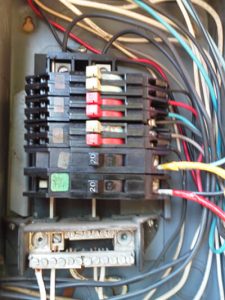 You are probably vaguely familiar with that scary big gray and black box in your basement or utility room. Most homeowners look to this box when they have a tripping breaker or sudden loss of power.
You are probably vaguely familiar with that scary big gray and black box in your basement or utility room. Most homeowners look to this box when they have a tripping breaker or sudden loss of power. 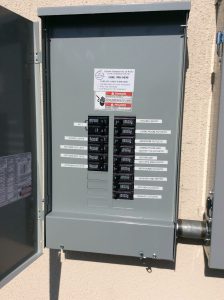 Knowing the size of your main electrical panel informs you of how many appliances you can run. It helps to determine if your panel can supply the electrical power you need after a renovation or room expansion. It also helps you decide if an upgrade is necessary.
Knowing the size of your main electrical panel informs you of how many appliances you can run. It helps to determine if your panel can supply the electrical power you need after a renovation or room expansion. It also helps you decide if an upgrade is necessary. 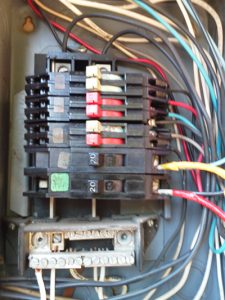 Electrical panels service homes and buildings by providing and controlling power. It is vital that such an important electrical appliance is safe and dependable. When this is not the case, homes and buildings can run into several electrical based problems that range from inefficient electricity supply to fires, electric shocks, and more.
Electrical panels service homes and buildings by providing and controlling power. It is vital that such an important electrical appliance is safe and dependable. When this is not the case, homes and buildings can run into several electrical based problems that range from inefficient electricity supply to fires, electric shocks, and more. 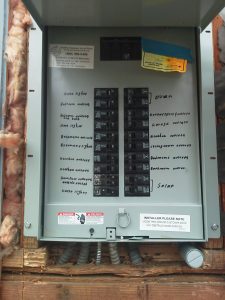 The electrical panel in the home is where your electricity is distributed. Some electrical technicians describe the panel as a box of switches and wires. It is where you can find the individual breakers responsible for sending power to specific parts of the home. Most times when there is an electrical problem, homeowners use these switches to turn off or turn on the power.
The electrical panel in the home is where your electricity is distributed. Some electrical technicians describe the panel as a box of switches and wires. It is where you can find the individual breakers responsible for sending power to specific parts of the home. Most times when there is an electrical problem, homeowners use these switches to turn off or turn on the power. 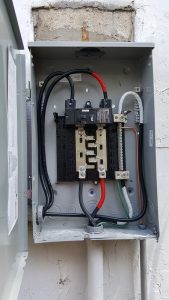 Panel upgrades are large projects. They require the expertise of a professional electrician and a good investment in funds. The electrical panels of a home contribute to its overall efficiency. In this modern age, we all rely so much on power to complete day-to-day activities. This power is distributed by the electrical panel of a home or building.
Panel upgrades are large projects. They require the expertise of a professional electrician and a good investment in funds. The electrical panels of a home contribute to its overall efficiency. In this modern age, we all rely so much on power to complete day-to-day activities. This power is distributed by the electrical panel of a home or building. 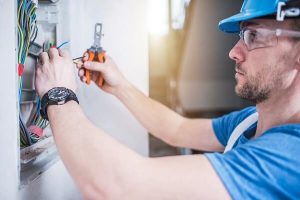 The electrical panel is the center of electricity supply in a home or building. It is called several other names such as the distribution board and breaker panel. You can identify the electrical panel as a metal electrical service board, located outside the home, in the garage, or the utility room. It is a network of wires and switches.
The electrical panel is the center of electricity supply in a home or building. It is called several other names such as the distribution board and breaker panel. You can identify the electrical panel as a metal electrical service board, located outside the home, in the garage, or the utility room. It is a network of wires and switches.